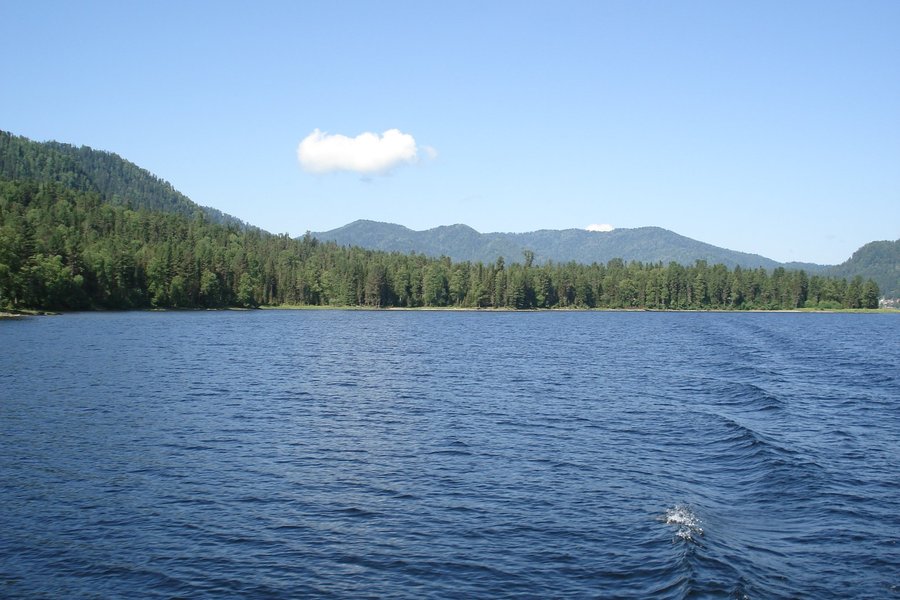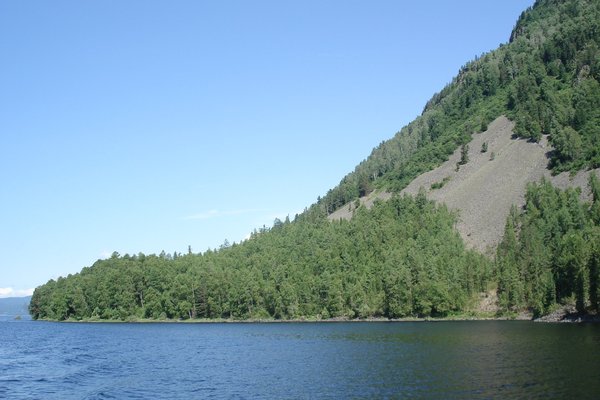Russia
Golden Mountains of Altai
The Golden Mountains of Altai is a region with high plant diversity in Southern Siberia.
The mountains have several undisturbed glaciers and provide the source of main rivers like the Ob. It also holds Teletskoye Lake, the second largest in Siberia after Lake Baikal. The mountains are the habitat of several globally endangered mammals, such as the snow leopard and the Altai argali.
Community Perspective: This is apparently a popular tourist place in summer, they mostly come for Teletskoye Lake. Alexander has described what there is to see.
Site Info
Official Information
- Full Name
- Golden Mountains of Altai (ID: 768)
- Country
- Russia
- Status
-
Inscribed 1998
Site history
History of Golden Mountains of Altai
- 1998: Inscribed
- Inscribed
- Type
- Natural
- Criteria
- x
Links
- UNESCO
- whc.unesco.org
- Official
-
- wild-russia.org — Katun Natural Reserve
- wild-russia.org — Altai Nature Reserve
All Links
UNESCO.org
- whc.unesco.org — whc.unesco.org/
Official Website
- wild-russia.org — Katun Natural Reserve
- wild-russia.org — Altai Nature Reserve
News Article
- Sept. 9, 2014 themoscowtimes.com — Russian Gas Pipeline to China Threatens Mummies, Leopards
Community Information
- Community Category
- Natural landscape: Mountain
Travel Information
Recent Connections
-
Perfect Inscriptions
1998 -
Centres of Plant Diversity
CA1 Altai-Sayan - "an important and ori… -
Already inscribed still on T List
The Ukok Plateau is also an important p…
Connections of Golden Mountains of Altai
- Geography
-
-
Siberia
-
Glaciers
AB review - "The presence of the high number of undisturbed glaciers in the nominated area makes it significant as a site for assessing the effects of global warming in mountain ecosystems". -
On National Border
On borders with Mongolia, China and Kazakhstan -
Notable lakes
Lake Teletskoye
-
- Trivia
-
-
Total Solar Eclipse since Inscription
29 March, 2006 & 1 August, 2008
-
- History
-
-
Palaeolithic and Mesolithic
"The region has a rich cultural heritage. The first humans appeared in the region almost a million years ago as evidenced by Palaeolithic settlements located in the region of Gorno-Altaisk." (nomination doc)
-
- Ecology
-
-
Gray Wolf
-
Bears
-
Snow leopard
-
Taiga
-
Steppe
"the most complete sequence of altitudinal vegetation zones in Central Siberia from steppe, forest-steppe" (AB ev) -
Otters
Eurasian otter -
Big Waterfalls
Shinok Waterfall
-
- World Heritage Process
-
-
Already inscribed still on T List
The Ukok Plateau is also an important part of the Treasures of the Pazyryk Culture (a cultural TWHS). -
Perfect Inscriptions
1998 -
Inscribed on a single criterion only
x. to contain the most important and significant natural habitats for in-situ conservation of biological diversity, including those containing threatened species of outstanding universal value from the point of view of science or conservation. -
Potential Transboundary sites
China's "China Altai"
-
- Human Activity
-
-
Petroglyphs
-
Famous tapestries
The 5th century BC Pazyryk carpet, a product of an Achaemenid carpet production centre, was discovered in 1949 in the Altai Mountains. -
Natural sites with indigenous human population
Altai: The area is sparsely populated with local populations of Russians and Altaisky, a Turkish speaking people, mainly involved in traditional pastoralism, low intensity agriculture, hunting and gathering. (nomination doc) -
Mummies
Pazyryk mummiesSee en.wikipedia.org
-
- Constructions
-
-
Tumuli
The Pazyryk tombs are Scythian kurgans, that is barrow-like tomb mounds of larch logs covered over by large cairns of boulders and stones, dated to between the 6th and 3rd centuries BCE. (wiki)See en.wikipedia.org
-
- WHS on Other Lists
-
-
World Biosphere Reserves
Katunsky (2000), Altaisky (2009) -
Centres of Plant Diversity
CA1 Altai-Sayan - "an important and original centre of biodiversity of montane plant and animal species in northern Asia, a number of which are rare and endemic"
-
- Timeline
-
-
Paleozoic
Geologists believe that the mountains were formed in the Caledonian period, but had a secondary rise in the Mesozoic and Cenozoic era. (Wiki)
-
- WHS Names
-
-
Name changes
The Nomination file title is "Sources of the Great Ob". IUCN however evaluated it under its inscribed name
-
News
- themoscowtimes.com 09/09/2014
- Russian Gas Pipeline to China Thre…
Community Reviews
Show full reviews
Visited this site in September 2020. Our first priority was a trip to Plateau Putorana with the group tour, but unfortunately the minimum required number of tourists was not met and the tour was cancelled. We therefore arranged in short notice for an individual tour around so called Golden circle of Altay. Altay is one of the most popular tourist regions of Russia and offers significant variety of natural landscapes (mountains, waterfalls, passes, rivers, lakes, geysers, stone formations) and cultural sights (petroglyphs, monasteries, mounds). The main logistic hint about classic route is that it is not looped, and at some point, you need to change car to boat in order to cross Lake Teletskoye (otherwise driving back the same road). Usual starting points for Altay are Barnaul and Gorno-Altaysk, the latter has fewer flights but saves 250 km of driving to the key sights. The site includes three separate areas: Altaisky Zapovednik and a buffer zone around Lake Teletskoye; Katunsky Zapovednik and a buffer zone around Mount Belukha; and the Ukok Quiet Zone on the Ukok plateau.The closest and easiest area to visit is Altaisky Zapovednik, where you could formally step into protected area by visiting Korbu waterfall (pictured). There are strict rules in order to visit protected area except Korbu and several inspectors' cordons, however almost whole Eastern coast of Lake Teletskoye is protected and could be admired from the boat or, if you lucky, from of the few very expensive hotels on the opposite side. The uniqueness of …
Keep reading 0 comments
A key reason for the pristine condition of Altai has been the careful stewardship by the aboriginal Altai people. A million tourists per summer, escalating ethnic Russian immigration, bungled federal land privatization, aggressive commercial development projects, helicopter poaching by high officials, and the legacy of Soviet repression have significantly subverted the local ability to even maintain their own culture, and the environment has suffered significantly. As far as I have been able to ascertain, the UNESCO World Heritage Site status is unfunded, and has not been sufficient to protect these incredible lands.
An indigenous Altai cultural resurgence is underway, and global concern is building as numerous international organizations are formed, dedicated to the protection of both the natural and the extraordinary cultural legacy of Altai. I invite correspondence from anyone who is interested.
Keep reading 0 comments
Viewed just Teleckoje Lake and a small part of Altaiski Reserve (zapoviednik) but I must admit it is area of outstanding beauty. High mountains, nature not touched by human population, deep lakes and landscapes similar to fiords in Norway. Clear water, no pollution whatsoever, you can use accommodation in Artybash village or some cottages located on Lake shores or even a big camping site on the southern part of Lake. But be sure you reserve that in advance - its quite popular region in the summer so in peak season it may be occupied. One of Russia's must to see.
Keep reading 0 comments
